How to execute a multi-location website redesign without losing traffic by Ignite Visibility
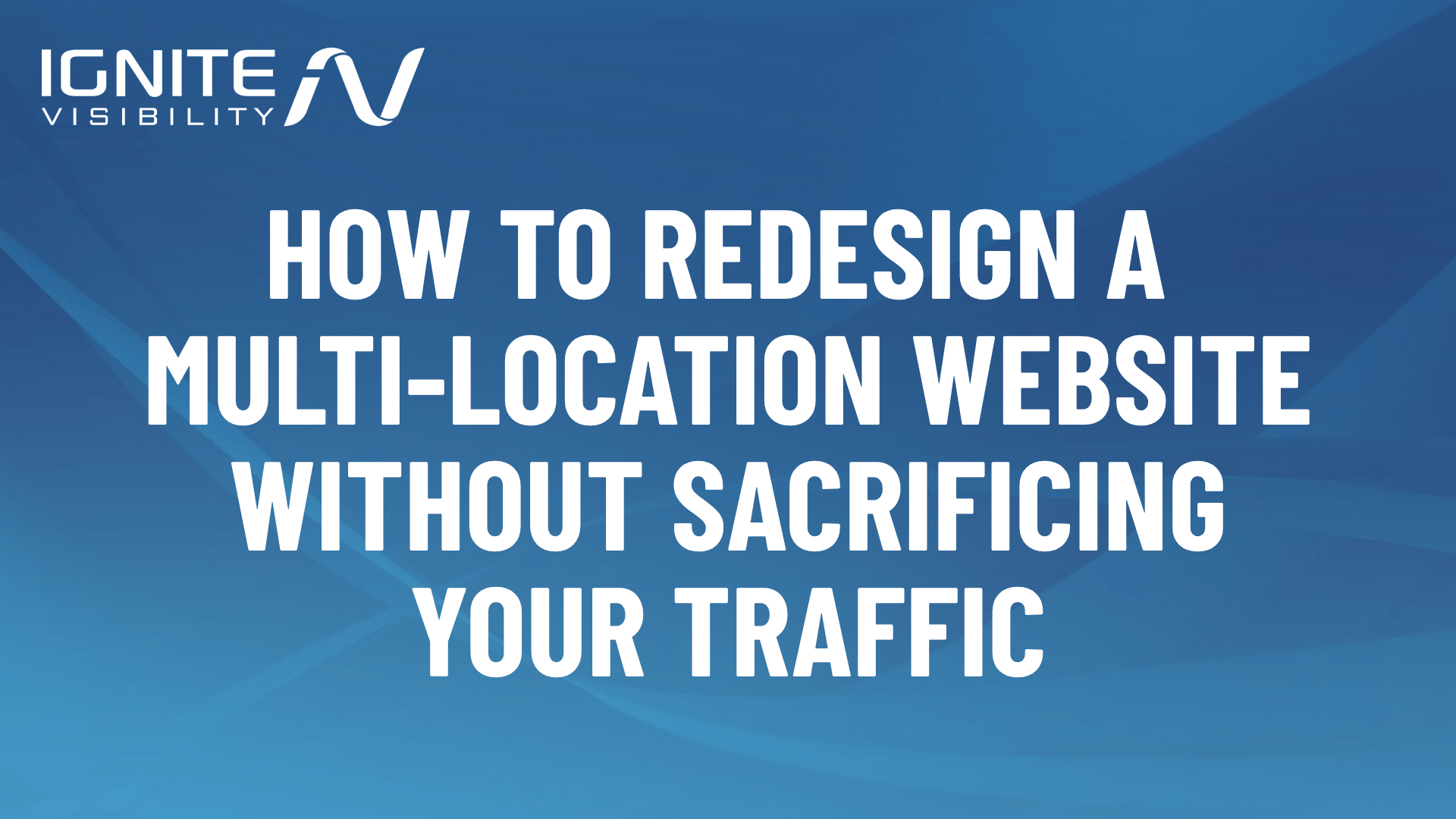

A website redesign is essential for remaining competitive, but for multi-location businesses, the risks are much higher. Stripping away the local relevance that drives traffic to location pages can cause rankings and online visibility to plummet.
Using localized content on location pages resulted in a 107% rankings lift, something businesses risk losing if a redesign hurts these pages.
To mitigate the risk of fallen local rankings and to get the most from your website redesign, you need to maintain good multi-location local SEO and take key steps for a successful redesign.
Prioritizing SEO during a location page redesign helps multi-location businesses stay competitive.
Technical SEO pre-redesign audit checklist
Before launching a new website redesign, it’s essential to perform a comprehensive audit to ensure that your SEO foundation is retained. Thorough auditing before launch can help prevent common mistakes and preserve your rankings.
- Manage inventory: Document all business locations, Google Business Profile IDs, current URLs, organic rankings, and highest-converting queries.
- Identify issues: Use a site crawler to uncover duplicate/thin content, poor Core Web Vitals, slow loading, mobile responsiveness, or accessibility gaps.
- Conduct a technical crawl audit: Confirm crawl budget, indexing, updated sitemaps, and hreflang configuration on multinational sites.
- Audit and enhance structured data: Ensure LocalBusiness schema is present and NAP is perfectly consistent. Validate canonical tags for duplicate prevention.
- Expand structured data: Consider implementing review, FAQ, and service schema types for additional SEO coverage.
- Set up robust tracking: Implement UTM tagging, conversion tracking, and phone call analytics to precisely measure local and national SEO performance
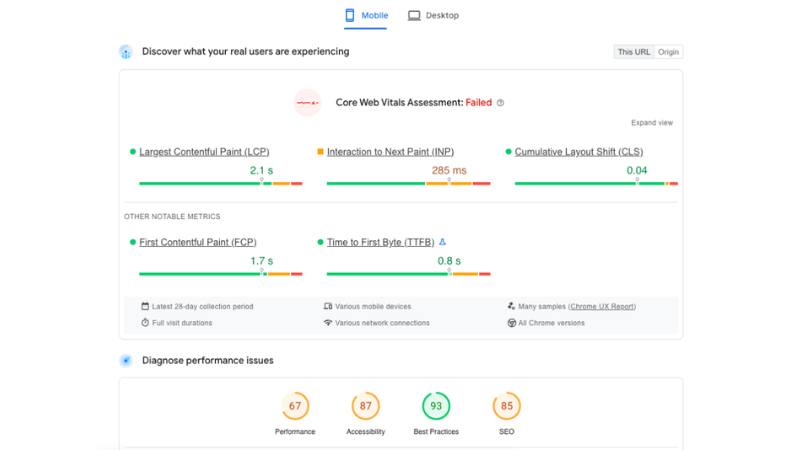
How to optimize site architecture and your URL strate
Once your pre-redesign audit is complete and you’ve identified areas for improvement, it’s time to shift focus to your site architecture for SEO. A solid foundation in site architecture ensures both search engines and users can navigate your website with ease.
Common structures include:
- Subfolders (/locations/city)
- Subdomains (city.brand.com)
- Multisite frameworks
- Dedicated microsites
Subfolders generally work best for centralizing authority and scalability, with a primary website that branches out into many pages, including one for each location.
Note that it’s crucial to maintain consistency with your URL structure. If the existing site already has a URL for each location within a subfolder structure, do not change it! Ensuring that the URL structure remains identical between the existing and new website design is essential for retaining your SEO value and preventing any loss in rankings.
Here are some other key considerations:
- Canonical URLs: Identify canonical URLs that help mitigate the risk of duplicate content.
- Sitemap strategy: Determine whether your site should implement an XML sitemap or an HTML sitemap, with XML sitemaps being more explicitly effective for site crawlers and SEO, while HTML sitemaps could help with user navigation.
- URL templates: Use static URLs, they’re cleaner and more optimization-friendly design (e.g., example.com/services/dentistry/location/).
Location page content considerations
Technical SEO components are important, but so is content. When redesigning your website, it’s crucial to prioritize the content elements that impact the SEO performance of your location pages.
A successful redesign should seamlessly integrate these elements to preserve and boost your SEO efforts.
- Unique H1 on each location page with city intent that targets a relevant keyword, such as “housekeeping services in [city]”
- Full name, address, and phone number that’s consistent across all directory listings
- Link to each location’s corresponding GBP page.
- Business hours that are up-to-date and unique to each location, further aligning with directory information
- Local phone number, preferably static to maintain consistency with NAP data
- Service-specific content, including details about each of your offerings, with locally optimized keywords for each
- Staff and team photos showing the people behind your business, potentially at each location
- Local testimonials from satisfied customers, including review and schema markup for aggregate ratings
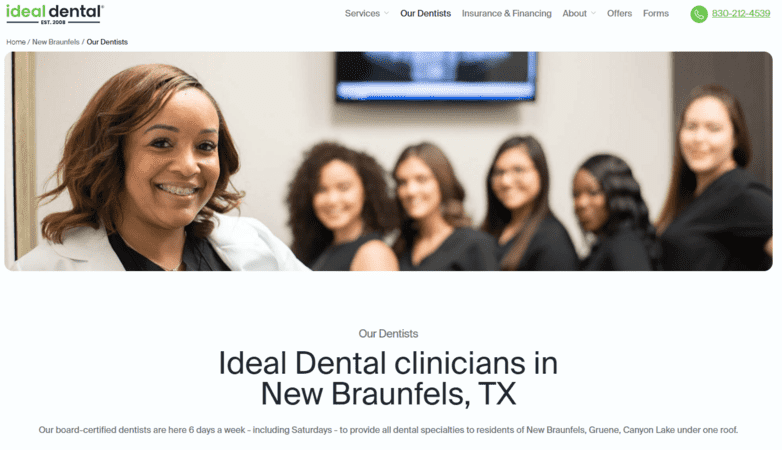
Source
As you incorporate these essential content elements into your location page redesign, it’s critical to ensure each page is unique and tailored to its specific location.
Each location page should include a designated content block section where you can add customized details about that individual location. This will additionally help reduce duplicate content across your location pages.
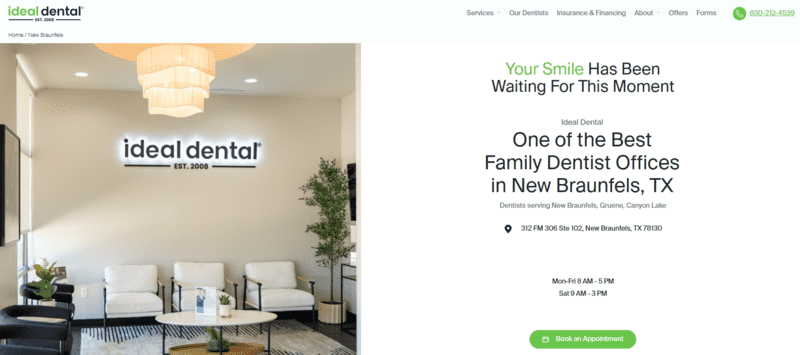
Source
Top design elements to consider for a multi-location website
Redesigning location pages can be challenging because it requires balancing brand consistency with the unique identity of each location. Achieving this balance involves the strategic use of design elements that appeal to both local audiences and the overarching brand.
Top design elements include:
- Location-specific imagery: For brick-and-mortar locations, use high-quality images of the storefronts. For service-based locations, showcase custom visuals that reflect the areas they serve.
- Interactive maps or location finders: Adding Google Maps or a custom location finder helps users easily find the nearest store or service center. This feature not only enhances usability but also provides a tailored experience for visitors.
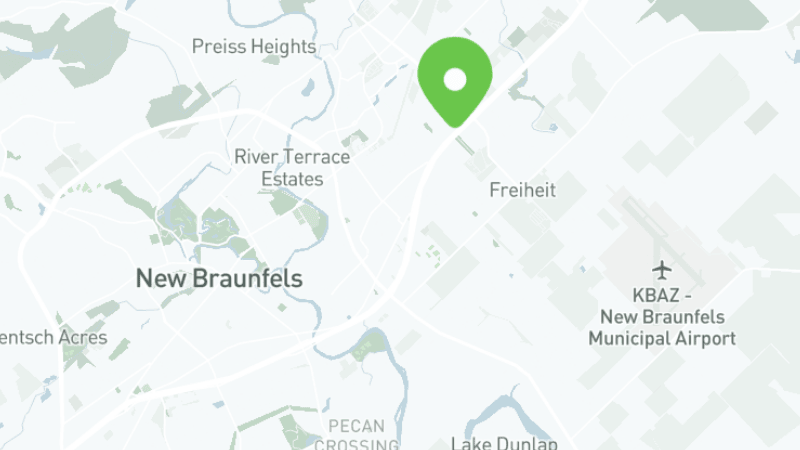
Source
- Social media feed integration: Integrating a live social media feed on location pages adds dynamic content and more localized imagery. It also provides a space to showcase promotions, events, and local engagement, keeping the page fresh and relevant.
- Team photos: Featuring photos of local team members helps humanize the brand and create a personal connection with your audience. It’s a great way to reinforce the idea that your business is part of the local community, building trust and authenticity.

Source
Complete multi-location redesign audit checklist
Website redesigns often require several months of planning and execution. However, before you push the new site live, it’s essential to ensure it passes the following key tests if you want to retain your traffic:
- Brand consistency: Ensure that branding elements, such as colors, typography, logos, and tone, are consistent across all pages and location-specific content.
- URL mapping: Double-check that all important URLs are correctly mapped to the new design and are still functional, preserving the SEO value of your existing pages.
- No URL structure changes: If you’re maintaining a subfolder structure, confirm that no URL structures are altered to prevent any loss of SEO rankings or broken links.
- Site performance: Test the website’s speed to ensure it meets performance standards, passes Core Web Vitals, is mobile-responsive, and is free of any accessibility issues.
- Clear CTAs: Ensure that each page features clear, concise calls to action (CTAs) above the fold to encourage user engagement and conversions from the moment visitors land on the page.
- Analytics setup: Verify that all necessary analytics and tracking codes (e.g., Google Analytics, conversion goals, UTM parameters) are properly implemented to monitor site performance and user behavior across all locations.
- Mobile optimization: Check that the site is fully optimized for mobile users, with responsive design elements that scale and display well on all devices.
- SEO-friendly content: Review content for SEO optimization, ensuring that each location page is targeted with local keywords, meta descriptions, and proper header tag hierarchy.
- Structured data implementation: Verify that all relevant schema markup (e.g., LocalBusiness, Service, Review) is correctly applied to each location page to support search engines in indexing your content.
- Internal linking: Ensure that all location pages have strong internal linking, guiding users through the site, and boosting SEO by connecting related content.
- User testing and feedback: Conduct user testing or gather feedback from stakeholders to ensure the new design is intuitive, user-friendly, and aligns with business goals.
- Content uniqueness: Confirm that all location pages have unique, location-specific content to avoid any potential issues with duplicate content.
- Legal and compliance checks: Ensure that the website complies with any industry-specific regulations (e.g., ADA compliance, GDPR, HIPAA) before launch.
- Cross-browser compatibility: Test the website across various browsers to ensure it functions smoothly for all users, regardless of their preferred browser.
- Backup and contingency plans: Create a backup of the current website before launching the redesign, and have a contingency plan in place in case issues arise post-launch.
By ensuring that these elements are in place, you can launch a multi-location website redesign that performs well across all locations and provides a seamless, user-friendly experience for your visitors.
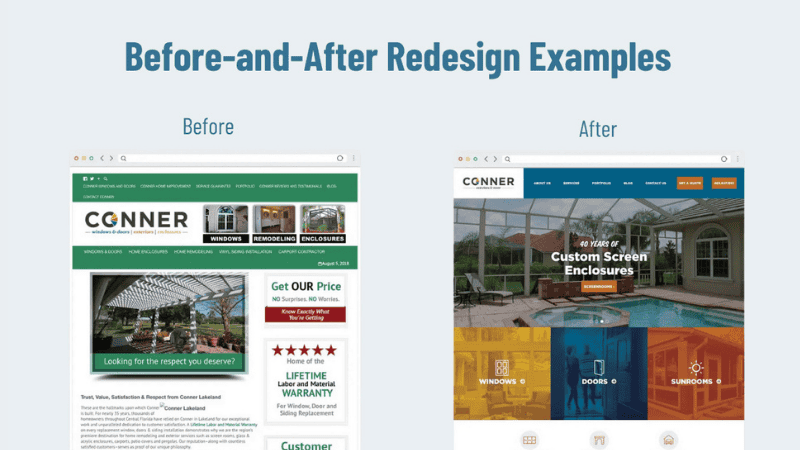
The business case: search and revenue impact at scale
Partnering with a web design and development agency that truly understands the complexities of multi-location businesses, technical SEO, and CRO is essential.
Ignite Visibility is a prime example of this expertise. We implemented a performance-driven SEO strategy to help a home services franchise with over 60 locations across the U.S.
The team optimized city-specific landing pages, standardized keyword-rich updates across Google Business Profiles, and strategically matched high-intent keywords to local markets to maximize visibility.
The results speak for themselves. The Ignite Visibility approach doesn’t just maintain rankings – it creates massive growth opportunities.
If you’re ready to maximize the impact of your next website redesign and achieve measurable, scalable growth, reach out to Ignite Visibility. With our proven track record, we’ll help you stay ahead of the competition and deliver results that matter.






Recent Comments